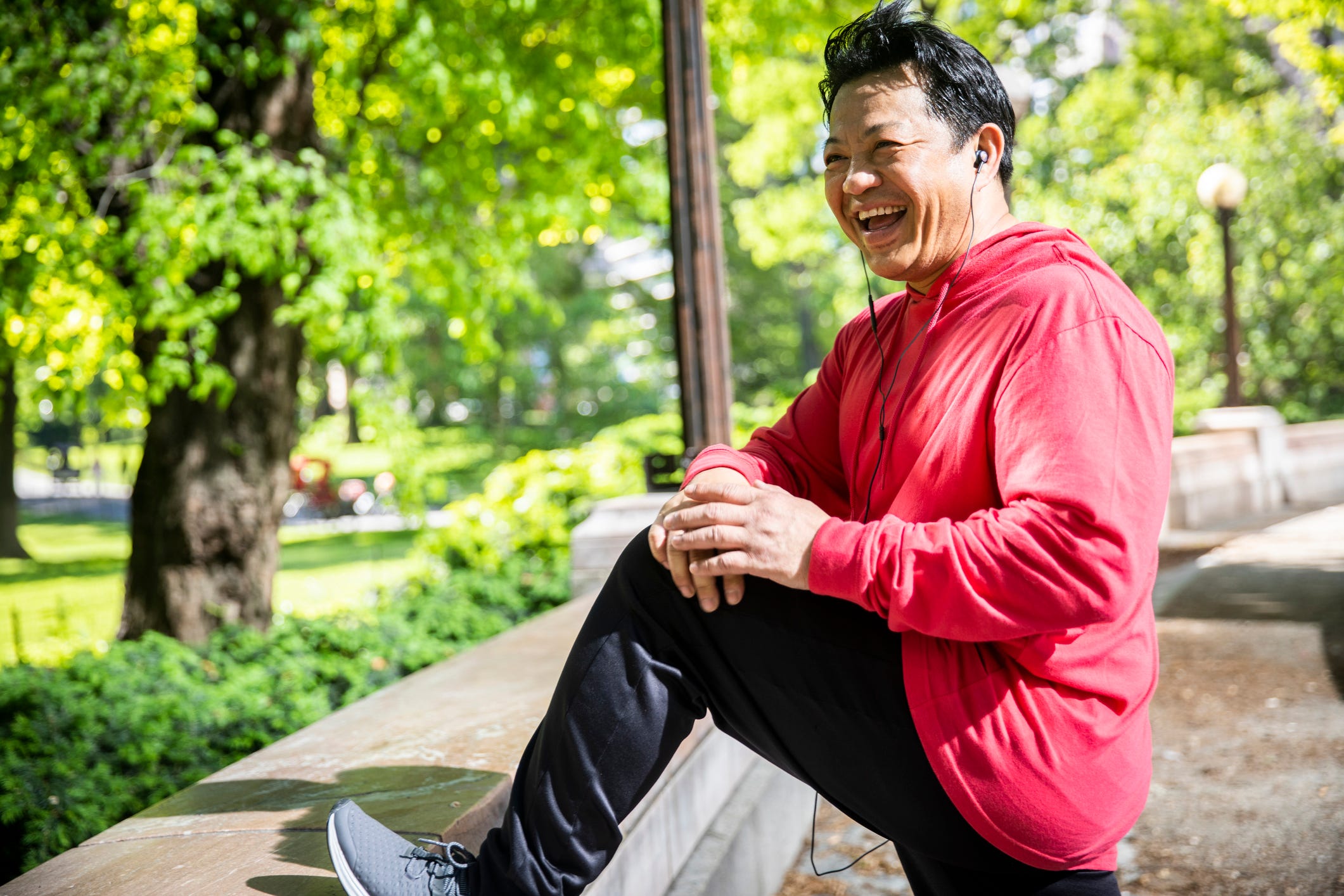
adamkaz/Getty images
- Tight hamstrings can feel like a stiffness or lack of mobility in the back of your thigh.
- Running and lifting weights can cause hamstring injuries so it's important to stretch before.
- Massage and physical therapy can also help loosen tight hamstrings.
- Visit Insider's Health Reference library for more advice.
The hamstrings are a group of muscles around the back of your thigh, which starts from the pelvis and reaches your knee. We use these muscles every day during simple activities such as walking or running, so it's important to stretch them to avoid muscle strain or tears.
"When your hamstrings – or any other muscle in your body -is 'tight,' your muscle is lacking the ability to move in a full range of motion," says Nina Ruhe, a NASM-certified personal trainer. "Most people likely experience tight hamstrings due to underuse of the muscle group and lack of time spent working on relative flexibility and range of motion."
Exercises like running or sprinting, lifting heavy weights, or squats can make you prone to hamstring injuries. You can loosen tight hamstrings through stretching to improve your flexibility and mobility, and even reduce back pain.
Here's how to loosen tight hamstrings through stretching, how often you should do them, and when you should also consider massage therapy.
7 stretches to loosen tight hamstrings
There are plenty of stretches that help loosen hamstrings. You can try each of the following one after another to form a hamstring stretch routine.
1. Toe touch
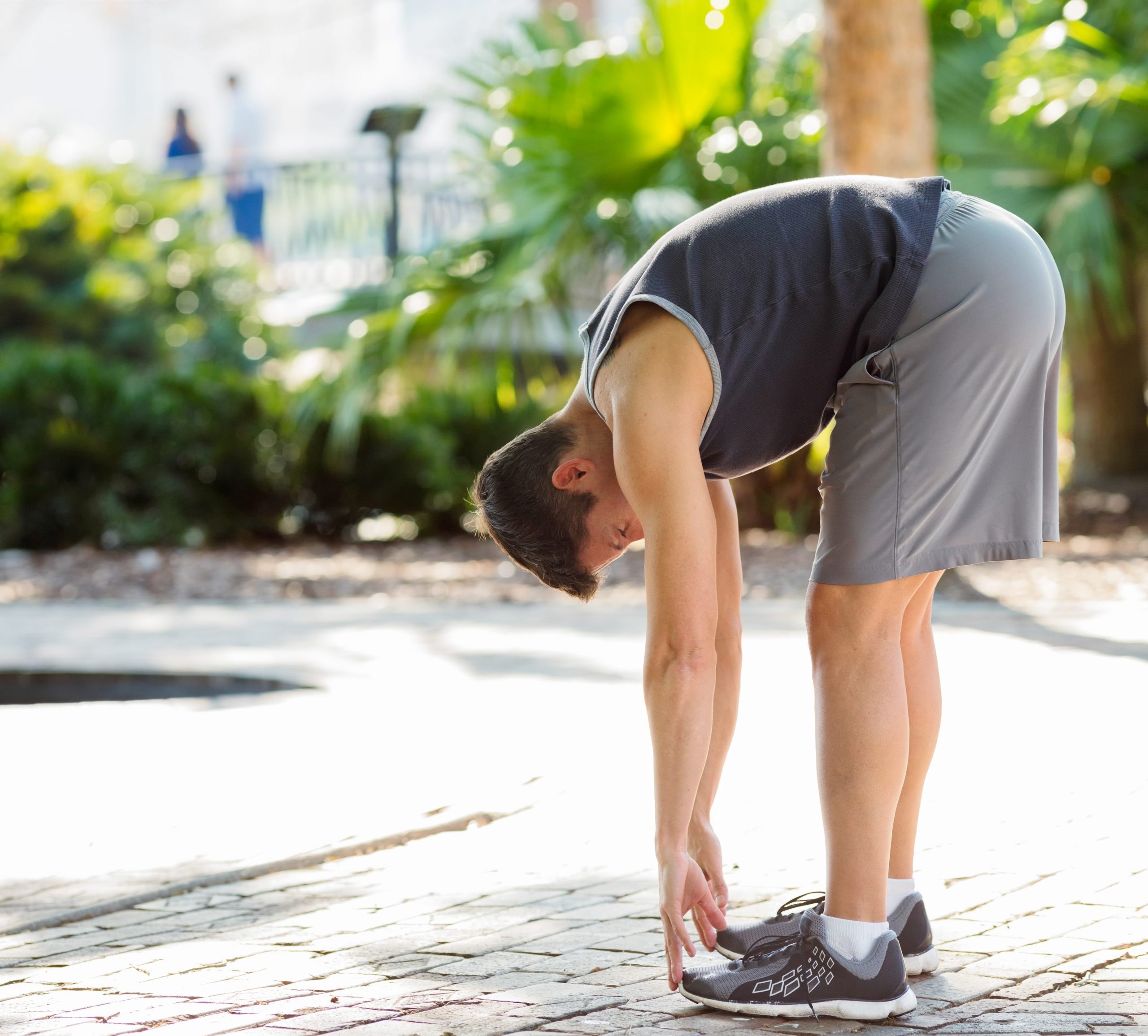
NicolasMcComber/Getty Images
- Stand straight with your feet firmly on the ground.
- Bend forward from your waist to try and touch your toes. Make sure to keep your legs straight and only go as far as you can.
- Hold the position for 15 to 20 seconds.
2. Standing hamstring stretch
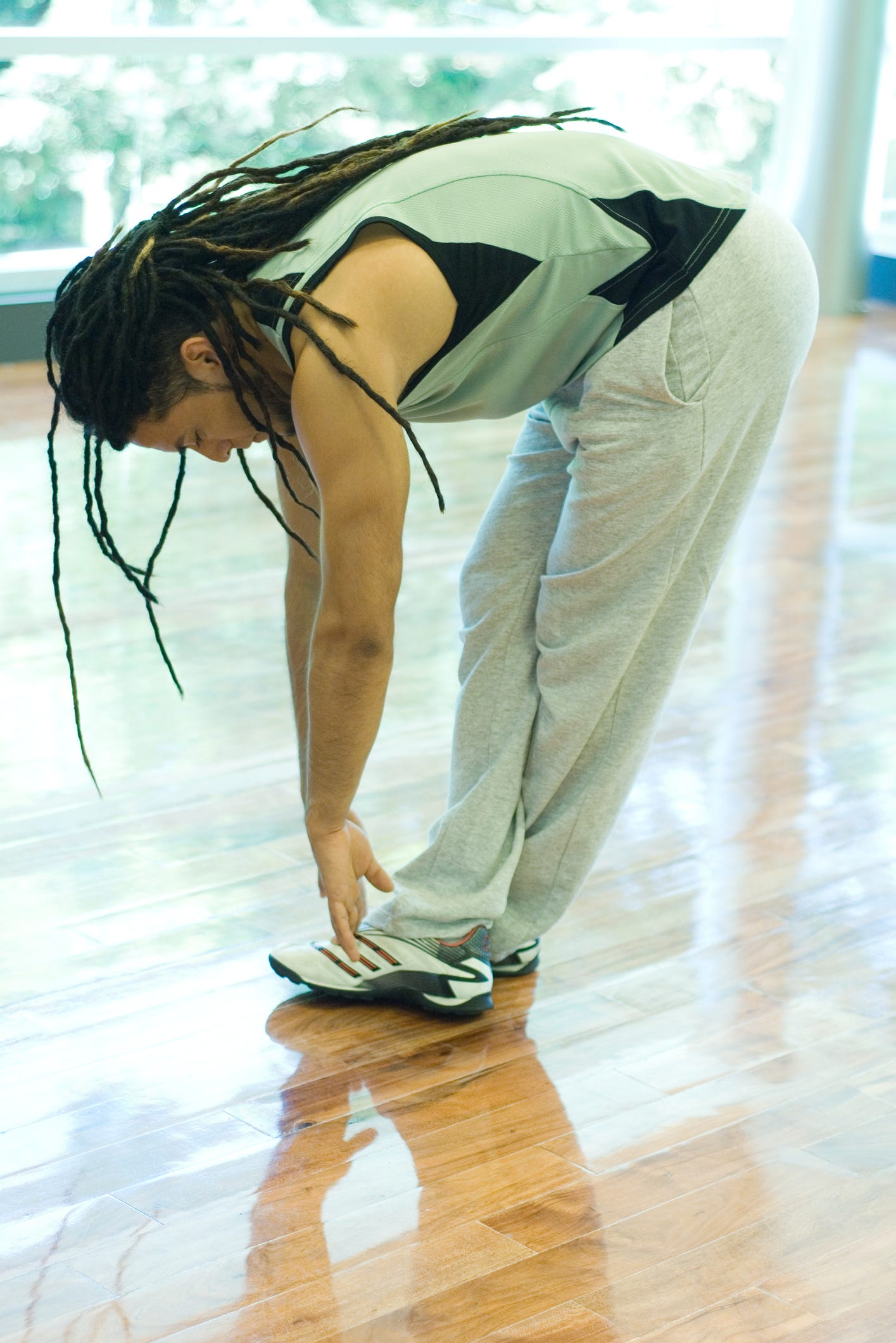
PhotoAlto/Eric Audras/ Getty Images
- Stand straight and cross your left foot in front of your right.
- Bend at the hip and lower your forehead to your knees. Keep your knees straight and make sure that the strain is not on your neck.
- Hold the position for 10 to 15 seconds.
- Repeat the steps with your right foot in front of your left.
3. Standing hamstring stretch (on an elevated surface)

Patrik Giardino/ Getty Images
- Place a chair about one foot away in front of you.
- Prop your left leg up on the chair and then slowly lean forward from the hip. Slightly bend your right knee and make sure to keep a straight back.
- Hold the position for 10 to 15 seconds.
- Repeat the steps on your right leg.
4. Seated hamstring stretch
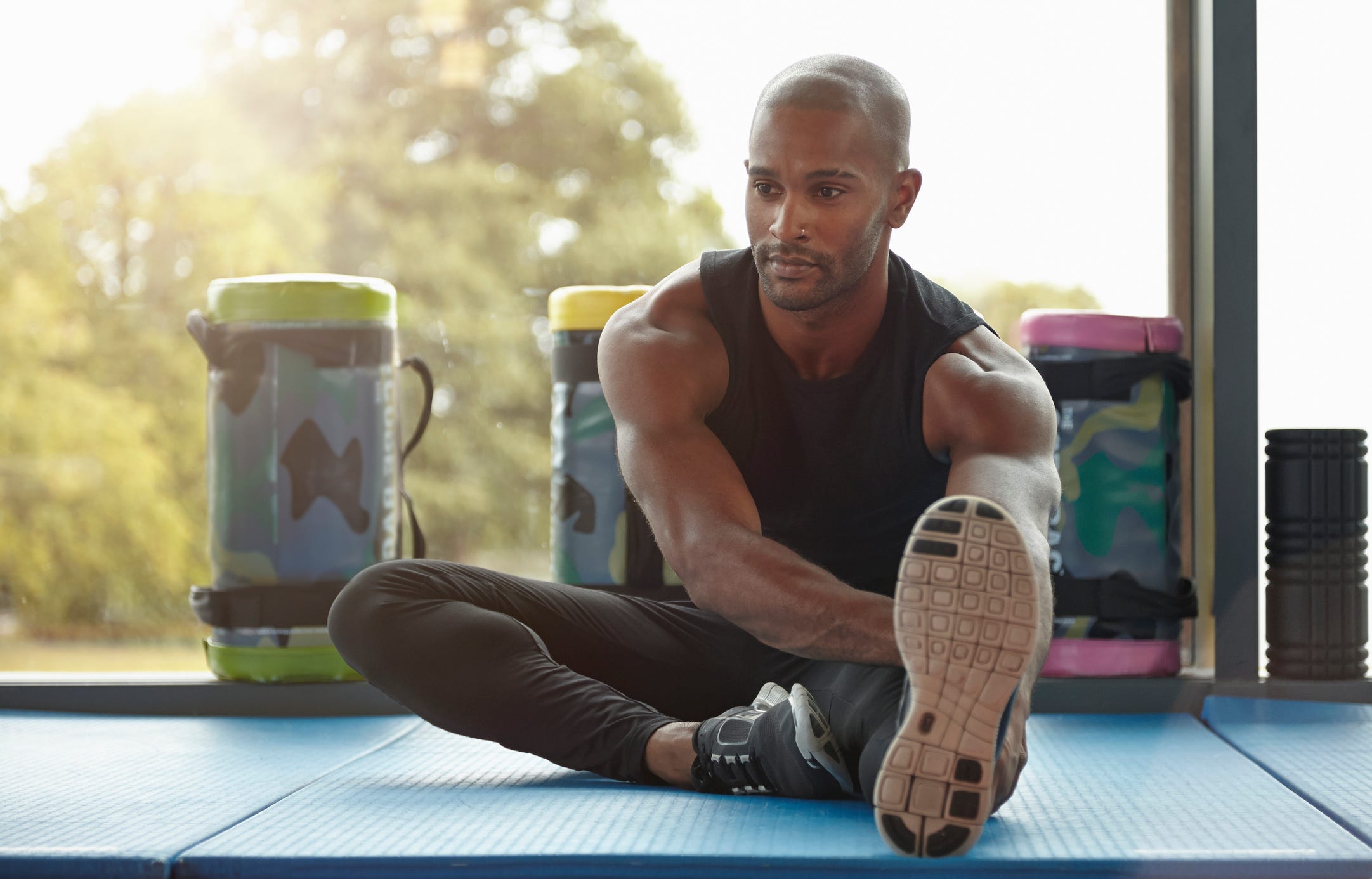
10'000 Hours/Getty Images
- Sit on the floor and extend your left leg straight in front of you. Bend your right leg so that the sole of your foot touches the left thigh.
- Bend forward to reach your left toe while keeping your back straight.
- Hold the position for 10 to 15 seconds.
- Repeat the steps on your right leg.
5. Seated hamstring stretch (with squats)
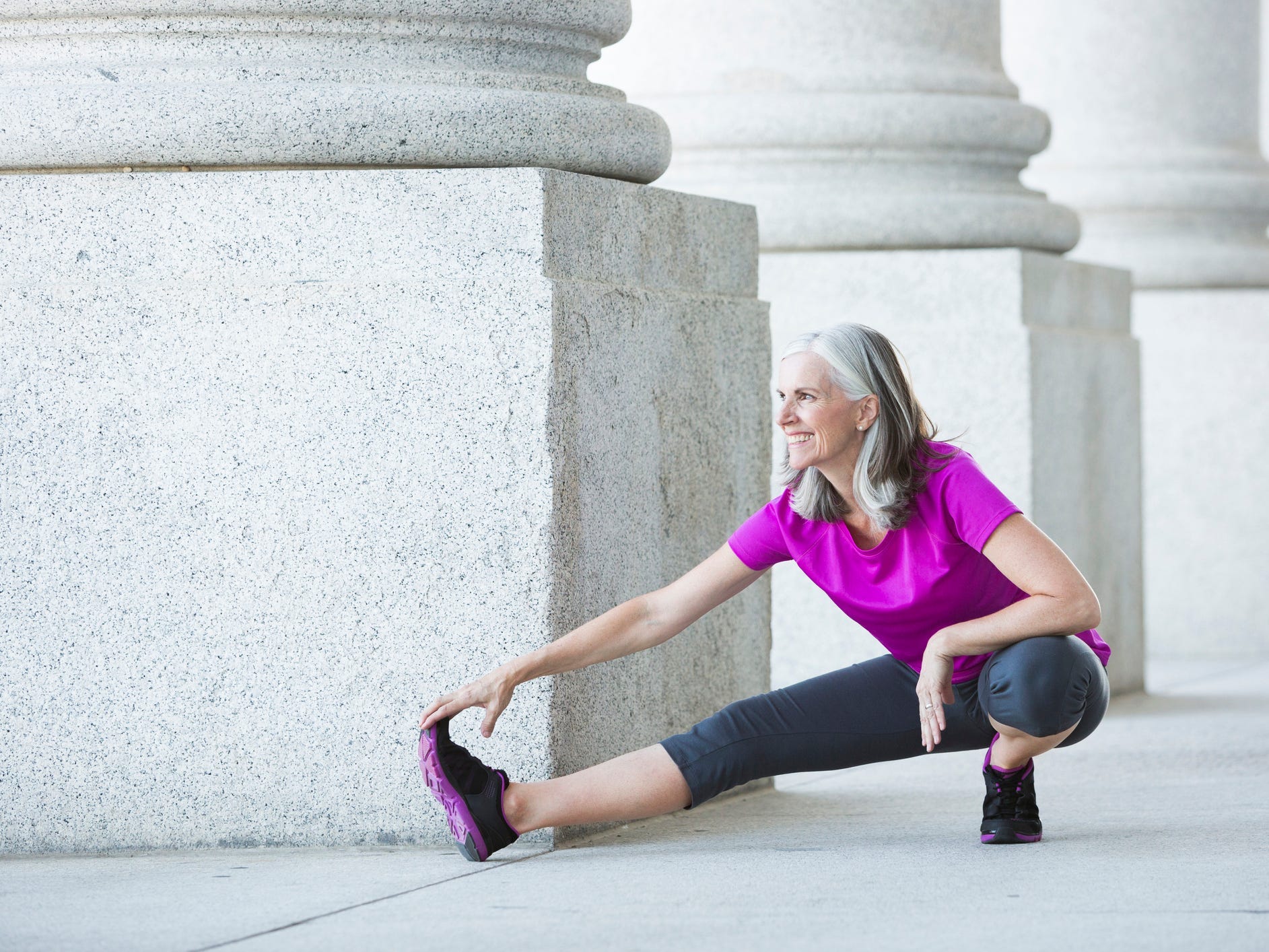
Mike Kemp/Getty Images
- Bend your right leg and squat on the floor in such a way that your backside is touching the heel of your right foot.
- Extend your left leg straight in front of you.
- Bend forward to reach your left toe while keeping your back straight.
- Hold the position for 10 to 15 seconds.
- Repeat the steps with your right leg.
6. Hamstring stretch while lying down
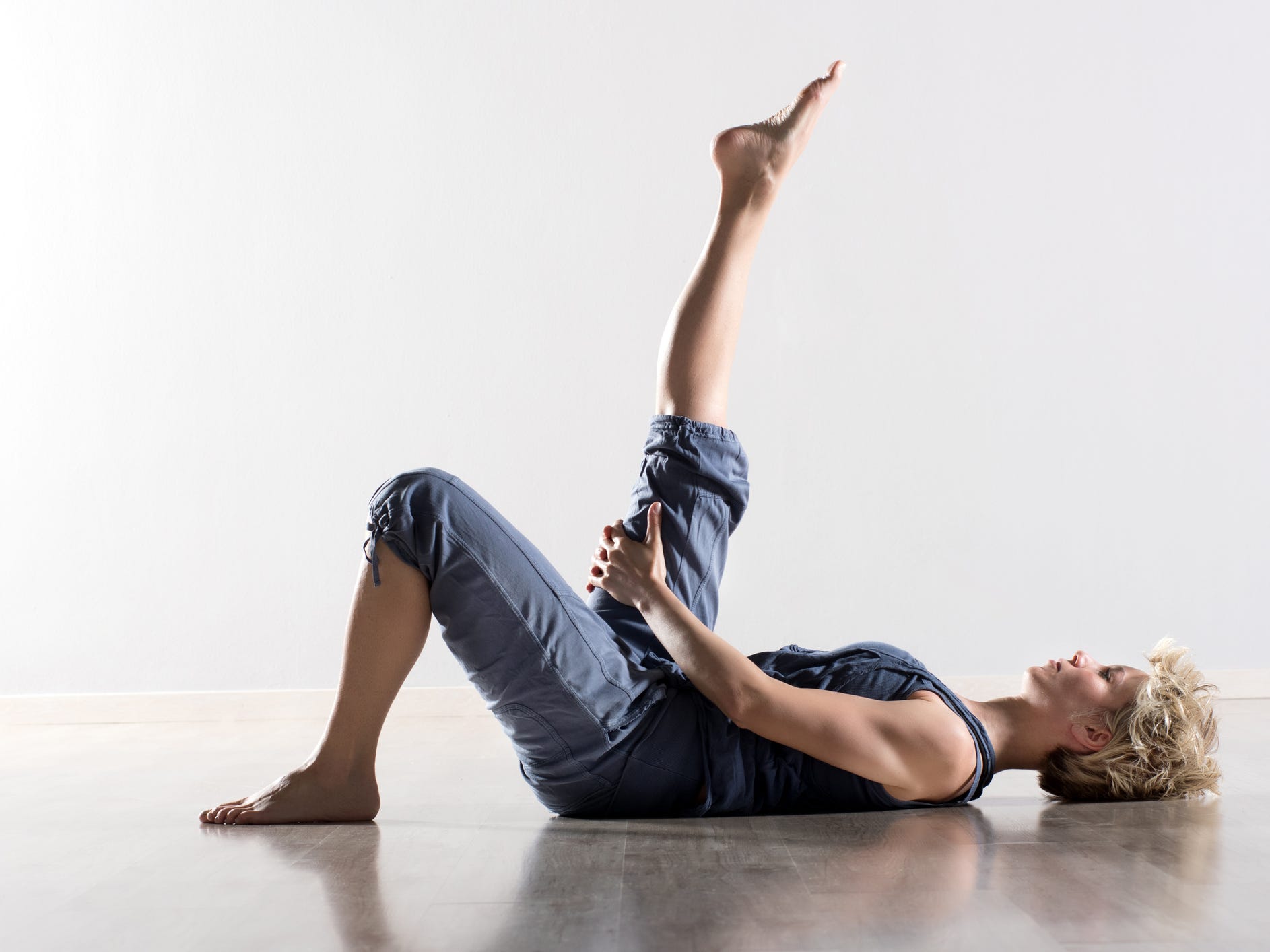
Photology1971/ Getty Images
- Lie on the ground with your legs fully stretched out.
- Bend your right knee, then extend your left leg upward and pull it towards you.
- You can hold the back of your left thigh to pull it closer as you keep the position for about 10 to 15 seconds.
- Put your left leg down and repeat the steps with your right leg.
7. Hamstring stretch while lying down (with a towel)
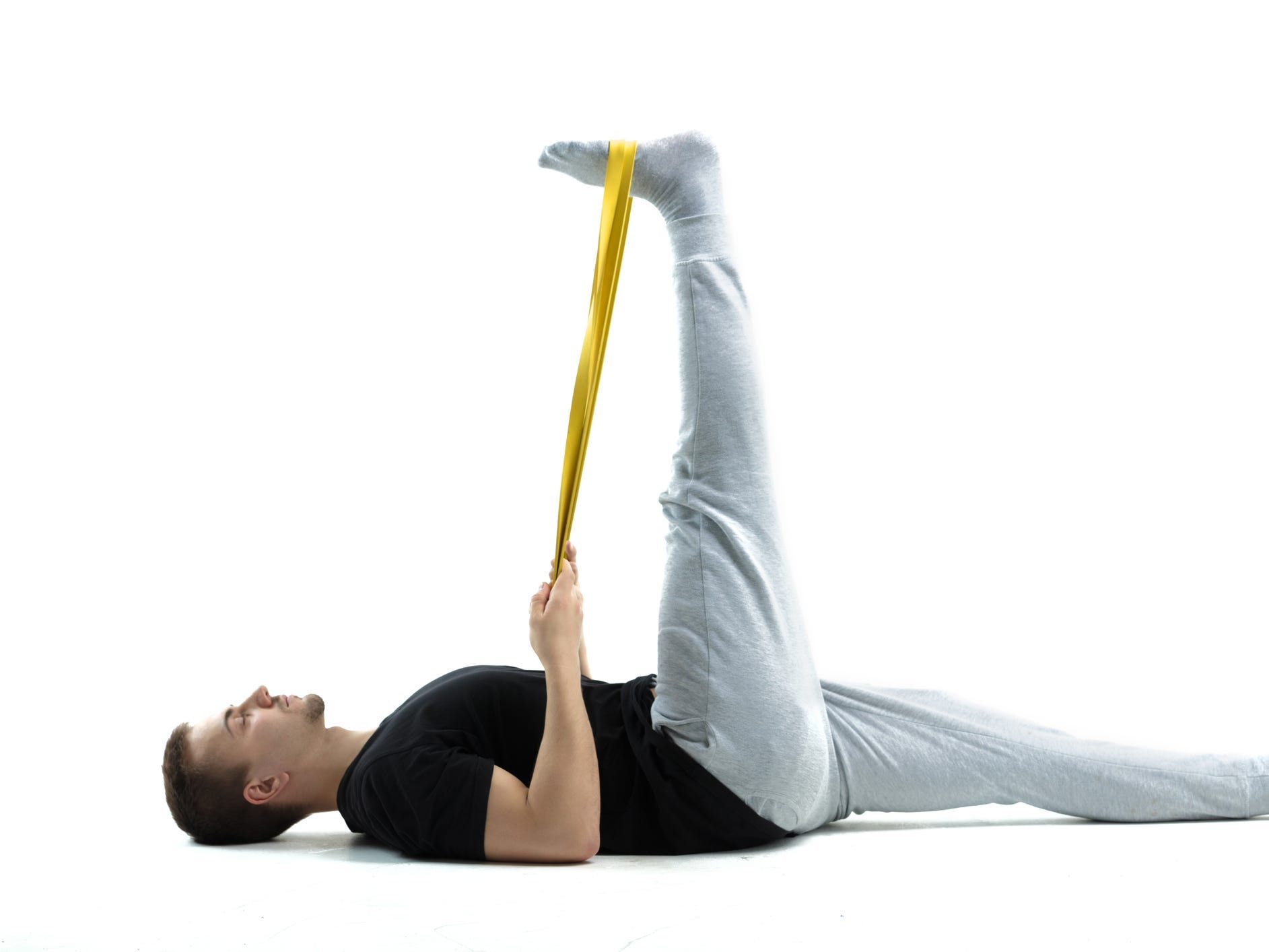
zenit122/Getty Images
- Lie on the ground with both legs bent.
- Fold the towel across the ball of your left foot, and hold the strap with both hands.
- Gently pull the strap and extend your left leg upward. The sole of your left foot should be facing the ceiling.
- Hold the position for about 10 to 15 seconds.
- Put your left leg down and repeat the steps with the strap on the ball of your right foot.
How often should you stretch your hamstrings?
It depends on the kind of physical activity you're about to do and how your body feels. If you're about to do an upper body workout or go for a light walk outdoors, it's generally fine to skip the hamstring stretch if you feel like it.
However, "if your workout for the day is leg or lower-body focused, I'd recommend incorporating at least one hamstring stretch into your warmup routine," says Ruhe. If your muscles feel tight, that may be a sign that you should stretch them before your workout.
According to Ruhe, stretching out your hamstrings regularly can increase your range of motion, which, in turn, can help you maximize your workout to be more effective and less uncomfortable.
"Increasing your range of motion in the hamstring complex has many benefits, including relieving that uncomfortable 'tight' feeling [and] increasing your range of motion, allowing you to get a better, more effective workout in," says Ruhe.
When should you try massage therapy for tight hamstrings?
If you experience chronic hamstring tightness, had a previous hamstring or lower body injury, or you just feel that something is off, you should see a physical therapist, says Ruhe.
Massage therapy can reduce stress and pain, which may relieve some of the tightness you feel in your hamstrings. However, it's still important to stretch regularly to build mobility.
"Massage therapy and pressure to the hamstrings and other muscle groups helps break up knots within the muscle and release tension," says Ruhe. "While massage therapy can definitely help alleviate some pressure and tightness, you must also prioritize regular stretching of the muscles to prevent continuous build up of muscle tension."
When it comes to muscle strain, ice and heat are also both beneficial. You can ice your muscles first to reduce inflammation and swelling, and then apply heat afterward to relieve tension and stiffness.
Insider's takeaway
Poor posture and extended periods of sitting can cause your hamstrings to feel tight or strained, but there are plenty of hamstring stretches that you can try to improve your flexibility and mobility. It's important to include hamstring stretches in your warmup if you're about to do physical activities that are lower body-intensive, like running, sprinting, or biking.
"Treat training and stretching them equally as important as you treat any other muscle group or training program. Skipping over stretching or working a single muscle group has the ability to throw the rest of the body off of balance and out of whack," says Ruhe.